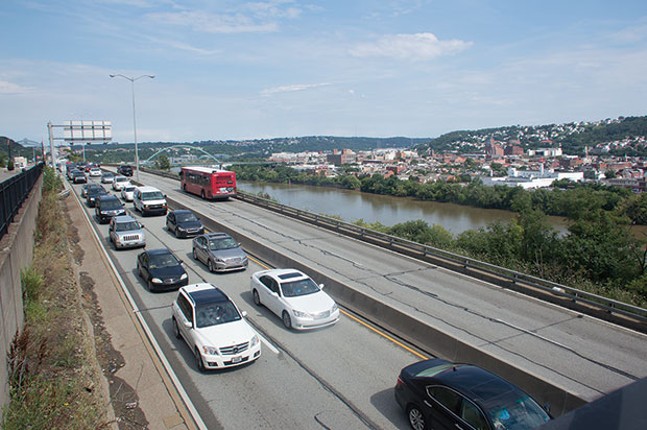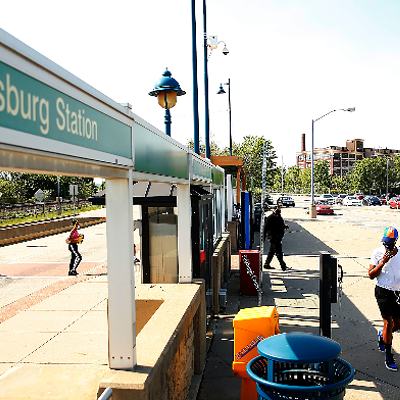
It’s no secret that over the past few years, Pittsburgh has been receiving high praise. The city has made countless lists like “best city for millennials” and has been named the “new Brooklyn” in national travel publications. And these declarations seem to have led many people to assess the city as booming.
In replying to an April New York Times travel article declaring that Pittsburgh “now thrives on culture,” a Facebook commenter from Phoenix wrote “LOVE Pittsburgh, great city, great example of how to turn the rust belt around and not with a time machine back to 1970.”
But while the city has much cooler stuff than it had a decade ago, it’s not actually growing, at least in terms of population. According to U.S. Census figures, the city of Pittsburgh lost 2,062 residents from 2010 to 2016. However, during this same time span, more than 20,000 people moved to a few bustling suburban areas surrounding Pittsburgh.
Experts and politicians agree that, while the city is doing better at attracting residents, it’s still losing out to the likes of Cranberry, Robinson and Peters townships. But with development taking off in many neighborhoods of the city, an influx of young residents to Pittsburgh, and steady job figures, can Pittsburgh compete and capture some growth for ourselves? Trends say probably not, but some think otherwise.
According to Jed Kolko, the chief economist at jobs website Indeed, the faster growth of suburbs compared to cities is a national trend. Kolko posted on his website in 2016 that “the share of Americans living in urban neighborhoods dropped by 7 [percent]” from 2010-2014. And while cities are growing more slowly, suburbs saw their growth speed up. According to data compiled by Kolko, lower-density suburbs (those typically located farther from the city core) saw growth of 1.3 percent from 2015-2016, while urban areas only grew by 0.5 percent.
This is true in the Pittsburgh region, too. Growth here is concentrated in a few suburban pockets, mostly in areas about 30 minutes from Downtown, and near an interstate highway. For example, five growing communities north of Pittsburgh (Cranberry and Adams townships in Butler County, and Pine, Marshall and Franklin Park in Allegheny County) have added 9,079 residents from 2010-2016. Three western Allegheny County communities, Findlay, Robinson and South Fayette townships, have added 6,777 residents during that time. And Peters, Cecil and North Strabane townships in Washington County, just south of the Allegheny County border, added 3,171 people.
Chris Sandvig, of the Pittsburgh Community Reinvestment Group, says sometimes there’s nothing a city can do to attract suburb-bound residents. He says that because the region’s population isn’t experiencing overall growth, the area appears to be shifting people around, usually helped along by the construction of interstate highways leading to Downtown.
For example, he points to the expansion of I-376 in 1962 and subsequent growth of Monroeville, when new suburban-style homes and strip malls were being constructed there, even as the region was starting to lose population. During the ’60s and ’70s, Monroeville added more than 8,000 residents, but since 2000, the borough has lost about 1,400 residents.
This doesn’t mean there’s no hope for growing Pittsburgh’s population. Chris Briem, an economist at University of Pittsburgh’s Center for Social and Urban Research, says signs point to a city revival, even as the overall population will continue to decrease. Briem notes the average age of Pittsburgh residents is dropping, even as the region’s age is staying the same. “That is a tremendously rapid change,” says Briem.
This means younger residents are moving to the city. But the overall population is still declining, largely due to the high number of deaths of older residents. From 2010 to 2016, the Pittsburgh area experienced about 20,000 more deaths than births.
Briem also notes that Pittsburgh’s success in maintaining jobs within city borders — about 300,000 over the decades — is promising. “We haven’t lost the jobs, we have almost the same jobs as we had in 1959,” says Briem. “The jobs are different, but in many places they are better.” But Briem says there’s still an “unanswered question” of whether young people will stay in the city to start families.
Pittsburgh Mayor Bill Peduto realizes this is an area the city can improve on. “When it comes to millennials, I think we are winning the competition with the suburbs,” says Peduto. “When it comes to people who are in their 30s and 40s, who are starting families, we are losing that competition.”
Peduto says 30- and 40-year-olds are looking for good school districts and, to a lesser degree, are concerned about higher taxes. He says continuing to improve Pittsburgh schools and keeping tax rates at a “competitive level” should help the city grow. Peduto adds that a more targeted approach to city-run tax abatements, like the Local Economic Revitalization Tax Assistance program, can help encourage new development, including affordable housing, and create more jobs.
Sandvig, of PCRG, says Pittsburgh can attract more residents, especially if it focuses on a job-attraction strategy first, instead of bricks-and-mortar redevelopment only, like what is currently booming in places like Lawrenceville.
“In a region where we are not gaining population, we have to figure out how to invest in jobs and people,” says Sandvig. “We need to help our home-grown entrepreneurs succeed [and] get more people access to the existing job pool, especially in communities of color.”
Editor's note: This article originally stated Pittsburgh lost 4,378 residents from 2010-2016. CP incorrectly compared two difference U.S. Census data sets and has since corrected this figure to read Pittsburgh lost 2,062 residents from 2010-2016.

















